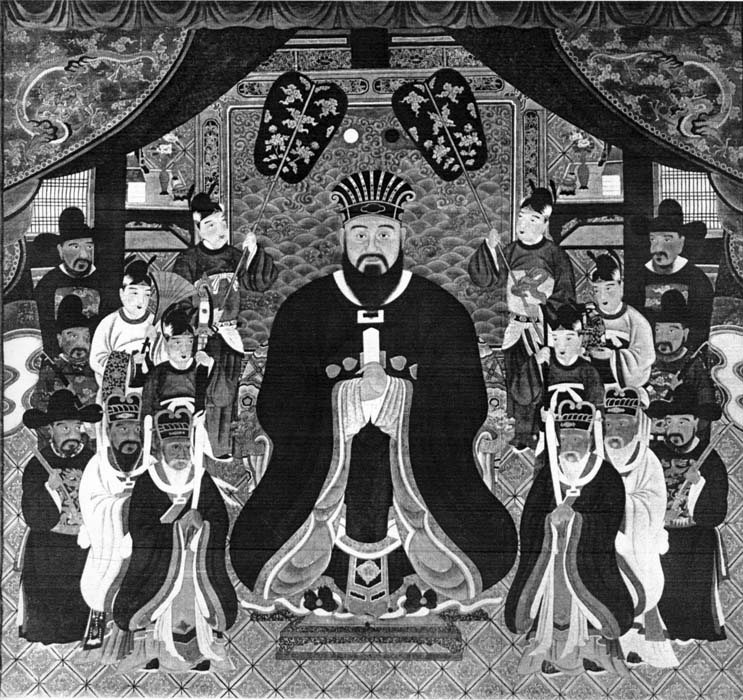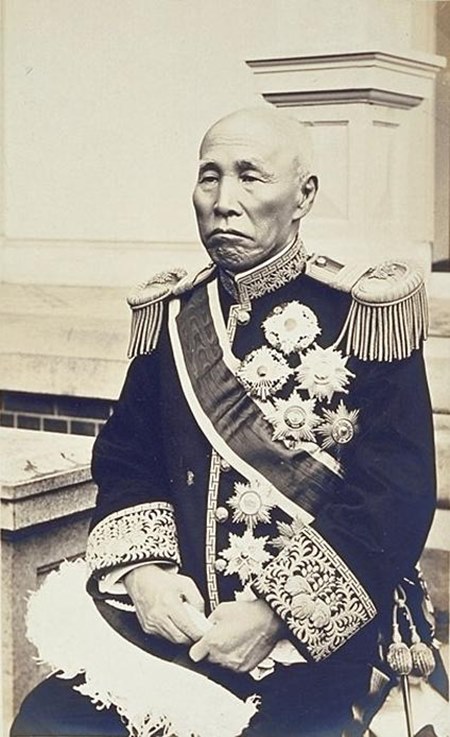|
Takushoku University
Takushoku University (拓殖 大学; ''Takushoku Daigaku'', abbreviated as 拓大 ''Takudai'') is a private university in Tokyo, Japan. It was founded in 1900 by Prince (title for a Duke at that time) Taro Katsura (1848–1913).Takushoku University: Home (''c.'' 2009). Retrieved on March 3, 2010. It has two campuses: the main campus in the Bunkyō Ward and a satellite campus in . Takushoku University has five faculties: Commerce, Political Science and Economics, Foreign Languages, International Studies, and Engineering. Takushoku University is a leading universi ... [...More Info...] [...Related Items...] OR: [Wikipedia] [Google] [Baidu] |
Private University
Private universities and private colleges are higher education institutions not operated, owned, or institutionally funded by governments. However, they often receive tax breaks, public student loans, and government grants. Depending on the country, private universities may be subject to government regulations. Private universities may be contrasted with public universities and national universities which are either operated, owned or institutionally funded by governments. Additionally, many private universities operate as nonprofit organizations. Across the world, different countries have different regulations regarding accreditation for private universities and as such, private universities are more common in some countries than in others. Some countries do not have any private universities at all. Africa Egypt Egypt currently has 21 public universities with about two million students and 23 private universities with 60,000 students. Egypt has many private universities in ... [...More Info...] [...Related Items...] OR: [Wikipedia] [Google] [Baidu] |
Cabinet Intelligence Bureau
The was a government organization in Japan. It was founded in 1940 at the request of Prime Minister Konoe Fumimaro. The organization's main objective was to improve pro-Japan public opinion around what was happening in World War II. Its main responsibilities included gathering information, reporting advertisements, and regulation or prohibition of publications. They distributed government propaganda both within and outside of Japan. In all, around 160 officers were employed by the organization. History In the late 1930s, the government redefined the term "citizen" as an agent who contribute to a war of their own will, but under the influence of government officials, critics, and others. The government promoted the concept of "total war". Private citizens were expected to contribute to the war. The government used mass media in order to promote patriotism and participation. The media was used to oppose enemy ideology and win ideological warfare. This was called " the theory of id ... [...More Info...] [...Related Items...] OR: [Wikipedia] [Google] [Baidu] |
Hakone Ekiden
, officially called the , is one of the most prominent university ''ekiden'' (relay marathon) races of the year held between Tokyo and Hakone in Japan on January 2 and 3. The race is telecast on Nippon Television. This two-day race from Ōtemachi to Hakone and back is separated into five legs on each day. Due to slight variations in the courses, the first day distance is 107.5 km while the distance on the second day is 109.6 km. Rules Five legs are provided between Tokyo and Hakone each way. Each runner runs one section, and alternates with the next runner at a station. Each team has ten runners, who each run with their team's sash which is handed over to the next runner on the team at each station. If a runner cannot get to a station within a certain time after the leading team reaches it (10 minutes for legs 1–2, 15 minutes for legs 3–4, 20 minutes for all subsequent legs), the next runner starts with a substitute sash. The time difference is added to the goa ... [...More Info...] [...Related Items...] OR: [Wikipedia] [Google] [Baidu] |
Judo
is an unarmed gendai budō, modern Japanese martial art, combat sport, Olympic sport (since 1964), and the most prominent form of jacket wrestling competed internationally.『日本大百科全書』電子版【柔道】(CD-ROM version of Encyclopedia Nipponica, "Judo"). Judo was created in 1882 by Kanō Jigorō () as an eclectic martial art, distinguishing itself from its predecessors (primarily Tenjin Shin'yō-ryū, Tenjin Shinyo-ryu jujutsu and Kitō-ryū jujutsu) due to an emphasis on "randori" (, lit. 'free sparring') instead of alongside its removal of striking and weapon training elements. Judo rose to prominence for its dominance over Kodokan–Totsuka rivalry, established jujutsu schools in tournaments hosted by the Tokyo Metropolitan Police Department (警視庁武術大会, ''Keishicho Bujutsu Taikai''), resulting in its adoption as the department's primary martial art. A judo practitioner is called a , and the judo uniform is called . The objective of competitive ju ... [...More Info...] [...Related Items...] OR: [Wikipedia] [Google] [Baidu] |
Japan Karate Association
The Japan Karate Association (日本 空手 協会; ''Nihon Karate Kyokai''; JKA; sometimes referred to simply as ''Kyokai'' 協会 in Japan) is one of the oldest global Shotokan karate organizations in the world. Origins Gichin Funakoshi played a major role in introducing karate from Okinawa to Japan, adjusted to reduce injury and merged with approaches for athletic training. On May 27, 1949, some of his senior students including Isao Obata, Masatoshi Nakayama, and Hidetaka Nishiyama, formed a karate organization dedicated to research, promotion, events management, and education: the Japan Karate Association. Funakoshi, then around 80 years old, held a position equivalent to chief instructor emeritus, with Nakayama as the chief instructor. The JKA emerged from karate clubs at Japanese universities located in the Tokyo region. Most of these universities, however, distanced themselves from the JKA during the 1950s. Takushoku University always kept strong ties with the JKA, bein ... [...More Info...] [...Related Items...] OR: [Wikipedia] [Google] [Baidu] |
Karate
(; ; Okinawan language, Okinawan pronunciation: ), also , is a martial arts, martial art developed in the Ryukyu Kingdom. It developed from the Okinawan martial arts, indigenous Ryukyuan martial arts (called , "hand"; ''tī'' in Okinawan) under the influence of Chinese martial arts. While modern karate is primarily a striking art that uses punches and kicks, traditional karate training also employs Throw (grappling), throwing and joint locking techniques. A karate practitioner is called a . Beginning in the 1300s, early Chinese martial arts, Chinese martial artists brought their techniques to Okinawa. Despite the Ryukyu Kingdom being turned into a puppet state by Japanese samurai in 1609, after the Invasion of Ryukyu, its cultural ties to China remained strong. Since Ryukyuans were banned from carrying swords under samurai rule, groups of young aristocrats created unarmed combat methods as a form of resistance, combining Chinese and local styles of martial arts. Training emph ... [...More Info...] [...Related Items...] OR: [Wikipedia] [Google] [Baidu] |
Meiji University
is a Private university, private research university in Chiyoda, Tokyo, Chiyoda, Tokyo, Japan. Originally founded as Meiji Law School () by three lawyers in 1881, it became a university in April 1920. As of May 2023, Meiji has 32,261 undergraduate students and 2,635 postgraduate students. The university consists of 10 undergraduate, 12 graduate, and 4 professional graduate schools, and operates on four campuses around the Greater Tokyo Area: Surugadai, Izumi, Ikuta, and Nakano, Tokyo, Nakano. Meiji University is the country's most applied-to university, with applications to its undergraduate degrees amounting to approximately 100,000 annually. Meiji is a part of the Top Global University Project of Japan's Ministry of Education, Culture, Sports, Science and Technology. As of 2021, 270 Meiji alumni have competed in the Olympic Games, Olympics, garnering 40 medals: 14 gold, 13 silver, and 13 bronze. Academics Undergraduate schools *School of Law **Businesses Law Course **Internat ... [...More Info...] [...Related Items...] OR: [Wikipedia] [Google] [Baidu] |
Waseda University
Waseda University (Japanese: ), abbreviated as or , is a private university, private research university in Shinjuku, Tokyo. Founded in 1882 as the Tōkyō Professional School by Ōkuma Shigenobu, the fifth Prime Minister of Japan, prime minister of Japan, the school was formally renamed Waseda University in 1902. Waseda is organized into 36 departments: 13 undergraduate schools and 23 graduate schools. As of 2023, there are 38,776 undergraduate students and 8,490 graduate students. In addition to a central campus in Shinjuku (Waseda Campus and Nishiwaseda Campus), the university operates campuses in Chūō, Tokyo, Chūō, Nishitōkyō, Tokyo, Nishitōkyō, Tokorozawa, Saitama, Tokorozawa, Honjō, Saitama, Honjō, and Kitakyūshū, Fukuoka, Kitakyūshū. Waseda also operates 21 research institutes at its main Shinjuku campus. The university is selected as one of the Top Type (Type A) universities under Ministry of Education, Culture, Sports, Science and Technology, MEXT's Top Gl ... [...More Info...] [...Related Items...] OR: [Wikipedia] [Google] [Baidu] |
Margaret Thatcher
Margaret Hilda Thatcher, Baroness Thatcher (; 13 October 19258 April 2013), was a British stateswoman who served as Prime Minister of the United Kingdom from 1979 to 1990 and Leader of the Conservative Party (UK), Leader of the Conservative Party from 1975 to 1990. She was the List of prime ministers of the United Kingdom by length of tenure, longest-serving British prime minister of the 20th century and the first woman to hold the position. As prime minister, she implemented policies that came to be known as Thatcherism. A Soviet journalist dubbed her the "Iron Lady", a nickname that became associated with her uncompromising politics and leadership style. Thatcher studied chemistry at Somerville College, Oxford, and worked briefly as a research chemist before becoming a Barristers in England and Wales, barrister. She was List of MPs elected in the 1959 United Kingdom general election, elected Member of Parliament for Finchley (UK Parliament constituency), Finc ... [...More Info...] [...Related Items...] OR: [Wikipedia] [Google] [Baidu] |
Akihito
Akihito (born 23 December 1933) is a member of the Imperial House of Japan who reigned as the 125th emperor of Japan from 1989 until 2019 Japanese imperial transition, his abdication in 2019. The era of his rule was named the Heisei era, Heisei being an expression of achieving peace worldwide. Born in 1933, Akihito is the fifth child and first son of Hirohito, Emperor Shōwa and Empress Nagako, Empress Kōjun. During the Second World War, he moved out of Tokyo with his classmates and remained in Nikkō until 1945. In 1952, his Coming-of-Age ceremony and investiture as crown prince were held, and he began to undertake official duties in his capacity as crown prince. The next year, he made his first journey overseas and represented Japan at the coronation of Elizabeth II in London. He completed his university education in 1956. In April 1959, he married Empress Michiko, Michiko Shōda, a commoner; it was the first imperial wedding to be televised in Japan, drawing about 15 mill ... [...More Info...] [...Related Items...] OR: [Wikipedia] [Google] [Baidu] |
Hideki Tojo
was a Japanese general and statesman who served as Prime Minister of Japan from 1941 to 1944 during the Second World War. His leadership was marked by widespread state violence and mass killings perpetrated in the name of Japanese nationalism. Born in Tokyo to a military family, Tojo was educated at the Imperial Japanese Army Academy and began his career in the Imperial Japanese Army (IJA) in 1905. He served as a military attaché in Germany from 1919 to 1922, and rose through the ranks to become a general in 1934. In March 1937, he was promoted to chief of staff of the Kwantung Army whereby he led military operations against the Chinese in Inner Mongolia and the Chahar-Suiyan provinces. Later in 1938, Tojo was recalled to Tokyo Second Sino-Japanese War to serve as vice-minister of the army. By July 1940, he was appointed minister of the army in the Japanese government under Prime Minister Fumimaro Konoe. On the eve of the Second World War's expansion into Asia and the Pa ... [...More Info...] [...Related Items...] OR: [Wikipedia] [Google] [Baidu] |






